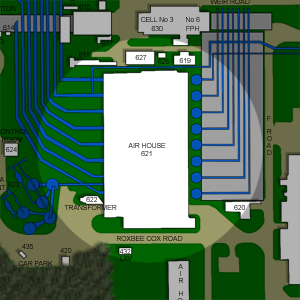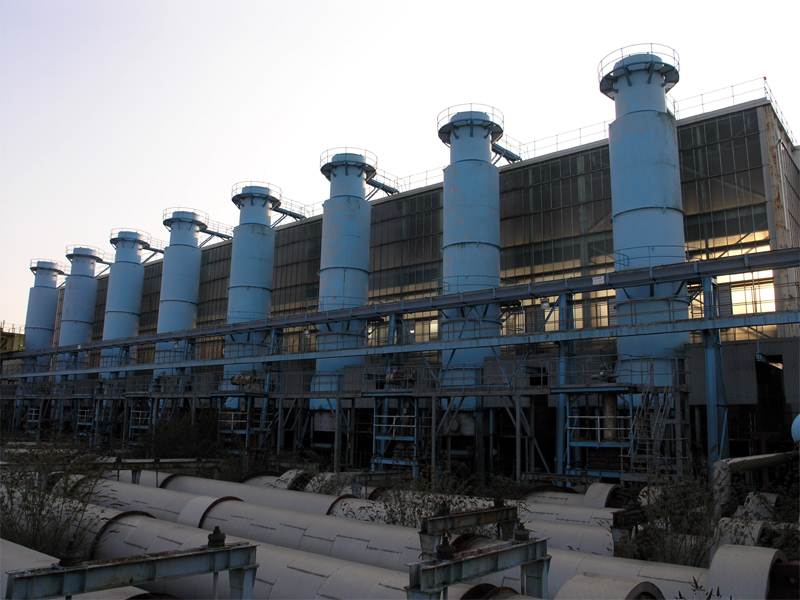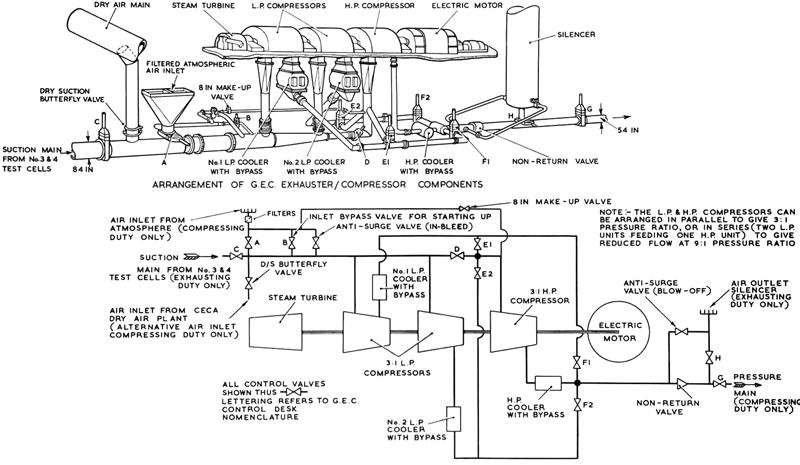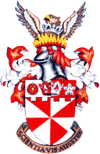 |
The Buildings
home | the buildings | air house (621)

Air House (621)
Built: 1961
Decommissioned: 2002
The Air House was an integral part of the site's expansion to cater for the new breed of
supersonic jet engines. It was clear that the new Cell 3 (constructed in 1961)
would require more high pressure air or more suction capability than the Plant House
could provide and so the Air House was constructed. It performed one function: to
generate right atmospheric conditions to fly a supersonic jet engine on the ground.
The building was one of the most eye-catching structures erected at Pyestock. Its steel frame
was mostly covered in glass and the eastern side was dominated by eight enormous atmospheric exhaust silencer stacks
(one for each of the compressor/exhauster sets installed inside). Its size was also emphasised by the massive
array of pressure mains and suction mains that snaked away on either side of the building,
thus providing clear views of the structure in the cramped north-western corner of the Pyestock site.
Internally the building was dominated by its turbine hall in which eight GEC centrifugal compressor/exhauster
sets were mounted in two-storey concrete plinths. These were connected to the air network in the floors below
whilst a large loading bay and gantry crane to the south of the turbine hall allowed heavy machinery to be installed
or removed. A control room overlooked the turbine hall whilst a single corridor, running the entire length of
the building, provided access to all the individual air filter rooms.

|
Sunset through the Air House. Eastern side of the
building.
31|03|07 © Simon Cornwell 2007
|
Each compressor/exhauster could supply high pressure air to the inlet of engines to simulate high forward
speed at low altitude. They could also extract the engine exhaust gases and lower the cell pressure so producing
the required altitude conditions. The outputs of one compressor/exhauster set could be fed into the inputs
of another, leading to extremely high pressures, or a large amount of suction, as required.

|
Classic north-west view of the Air House turbine hall.
03|03|07 © Simon Cornwell 2007
|
They were built up of a steam turbine at one end, two low-pressure 3:1 compressors, one high-pressure 3:1 compressor
and an electric motor at the other end. Therefore each machine could produce 3:1 to 9:1 pressure ratios depending on
how the three compressors were run. The 8000 horse-power steam turbine was originally used to start and accelerate
the machine to constant running speed of 3000 rev/min, at which point the 36,500 horse-power electric motor was
synchronised with the C.E.B. grid frequency and then the electric motor could be switched in.

|
|
Air circuit for a G.E.C. exhauster/compressor installed in Air House
|
The building changed little over its working life. At some point, the compressor/exhauster sets were modified
so they could be electronically started with variable frequency power source – this relieved the dependency
on the Battle Test House for the necessary steam. This modification
also probably prompted the modification of the control room, where each of the large control consoles for
the compressor/exhausters was replaced by a much smaller semi-circular control panel in the centre of the room.

|
The Air House control room looking south.
21|04|07 © Simon Cornwell 2007
|
The Air House was one of the most iconic and photographed buildings on site. Both the elegant
eastern flank with its sky-blue towers or the red-and-white compressor/exhauster sets in the turbine hall
became synonymous with Pyestock. Official publications all reproduced these familiar views.
But its fate was entwined with Cell 3 and
Cell 4; and as these testing chambers fell into disuse then the
power-hungry Air House was also obsoleted. It closed in 2002.
Air House Walkthrough...
Further Reading
|


